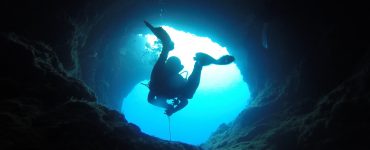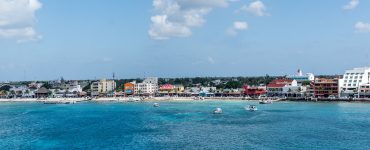As coral bleaching continues to cast a depressing shadow over the east coast of Australia, the isolated Ningaloo Reef in the west is thriving as an attractive underwater alternative.
Recognized as a UNESCO World Heritage site in 2011, it provides a rare opportunity to leave your towel on the white sand and reach the coral with a few lazy strokes. The self-promoting village of Coral Bay presents the best example of this, within 500m of the reef in some places.
Marine life
The broad marine landscape is complemented by the presence of rare and exotic sea creatures. In 2015 scientists identified the short-nosed and leaf-scaled sea snakes, two species which were previously believed to be extinct. For those of you who prefer to avoid sharing your personal space with anything venomous, don’t panic, there are also more docile alternatives to bond with.
The peak tourist season coincides with the arrival of whale sharks, who drift past the reef between the months of March and September each year. This period also attracts the highest volumes of manta rays, a graceful sight scavenging along the shallower sections of the ocean floor.
Despite sharing its name with a fearsome predator, the deceptive Shark Bay to the east of the reserve is actually among the best locations in the world to interact with an aquatic genius, the bottlenose dolphin. For over 50 years these cheeky mammals have delighted visitors to the remote beachside resort of Monkey Mia.
Not to be outdone, the endangered loggerhead turtle has had a productive few years on the reef and sightings are becoming increasingly common. If you are truly fortunate you may even catch a glimpse of the elusive dugong, affectionately nicknamed the cow of the sea for their bulky frame and fondness for submerged grass.
These rare sightings are dependent on ocean clarity and the Ningaloo region boasts an inviting tropical climate, the sun is shining for the majority of the year. However from a diving perspective, it would be wise to keep a close eye on the long-range weather forecast, strong winds pose the biggest threat to underwater visibility and this coastline has had their share of gales in the past.
Getting there
Aside from the odd aggressive breeze, there is another obvious hurdle to overcome if you hope to explore this beautiful area, it is extremely isolated, even by Australian standards. Boarding a plane is the only option for those on a tight schedule and while flights are becoming more frequent, there is sadly not enough competition to drive prices down.
If you have the opportunity, a journey by road along the West Australian coast is a wonderful way to approach the reef, although it is certainly a time-consuming experience. The popularity of this region will continue to swell as flight traffic increases and attention shifts away from the commercial Great Barrier Reef in the east. If you are considering a trip to this pristine corner of the west do not hesitate, the crowds are surely coming in the future.
Header image credits: Australian tourism





















